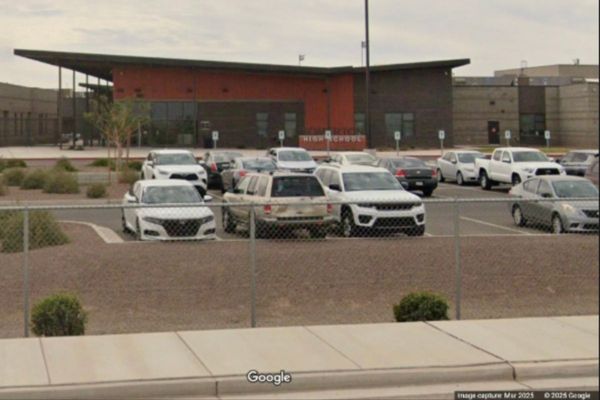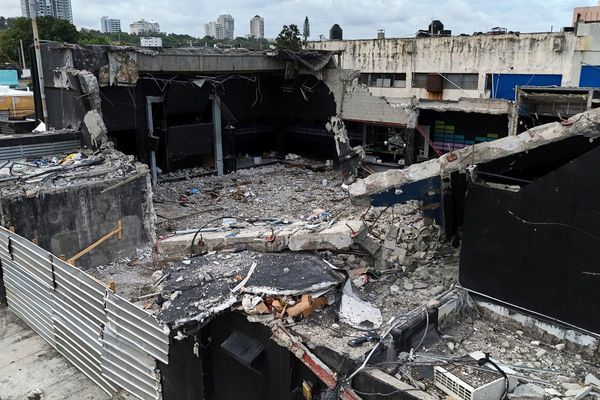
On July 7, as devastating floods hit Assam, claiming at least eight lives and affecting more than 220,000 people across 3,446 villages, a war of words ensued between state water resource minister Pijush Hazarika and academician Mitul Baruah on X over the effectiveness of embankments in flood control.
Hazarika had announced on social media about the construction of an additional over 200 kilometers of embankments as a flood mitigation measure, claiming that the “overall flood situation is improving in Assam”. But Baruah, an associate professor at Ashoka University, replied that “embankments are the problem and not a solution”.
The debate over the efficacy of Assam’s nearly 4,500 kilometers of embankments — along its major rivers, Brahmaputra and Barak, and their tributaries – in flood control is not new. But between May 2021 and February 2024, the coffers of the state water resource department, which is primarily responsible for the construction and maintenance of embankments, drained over Rs 1,500 crore on 105 projects of strengthening, raising, and constructing new embankments. In July this year, the government said it had built 189 kilometers of new embankments and raised and strengthened 440 kms of embankments in the past three years.
A review of the state budget revealed that allocations for embankment-related projects have been steadily increasing, from Rs 940 crore in 2022-23 to Rs 1,038 crore in 2024-25
But is it a solution or problem?
Floods are an annual catastrophe in Assam, with July and August notorious for devastating floods affecting people and wildlife. This year alone, floods have claimed 109 lives and affected nearly 600,000 people across 17 districts so far.
In the long history of floods in the state, it has been particularly severely hit in 1972, 1974, 1978, 1983, 1986, 1988, 1996, 1998, 2000, 2004, and 2012, as per the Assam State Disaster Management Authority. More recently, annual flash floods and prolonged inundations were observed in 2018, 2020, 2021, 2022 and this year.
One of the oldest methods deployed to deal with recurring floods is embankments. These earthen walls, built on both sides of rivers, are designed to prevent floodwaters from spilling over and inundating adjacent land. The idea is that the river would carry its water safely to the sea, sparing the fields and homes on its banks.
But are embankments truly effective in controlling floods? Experts and scholars have long argued that embankments cause more harm than good. They argue that during monsoon, when rivers swell, embankments confine the water’s course, increasing pressure on the riverbanks and leading to breaches. These breaches often cause more damage than natural flooding, catching people in flood-prone areas off guard.
Baruah, an academic critic of embankments, has highlighted earlier that the river island of Majuli frequently floods due to embankment breaches. This year, an analysis of ASDMA’s flood reports reveals that at least 71 embankments were breached between mid-June and July 20, with 116 embankments affected overall.
Ravindra Nath, an Ashoka fellow who has studied embankments for years, has termed them as an “elephant” for the state due to the Herculean task of maintaining thousands of kilometers of these structures. Speaking to Newslaundry, he said breaches will continue as maintenance is “impossible”. Nath asserted that “if embankments are made pucca (cemented), then only it could become a solution. Otherwise, it is a curse”.
Dinesh Mishra, an engineer and author of books on embankments, agreed that no embankment is immune to breaches. He told Newslaundry, “Earlier, the water used to spread wherever it wanted to. Now, we have prevented it by constructing embankments. So, first, embankments prevent river water from entering the countryside as long as it can stand the pressure of the river. But it also prevents the water from the countryside which used to enter the river, resulting in massive water logging in these areas.”
Mishra pointed out that embankments exacerbate flooding issues in the countryside. “All these rivers carry a lot of sediments. When the speed of the river reduces, the sand part starts to tackle within the embankments. The silt deposited in the river raises the riverbed level, which means embankments have to be raised too so that the floodwater does not spill over the embankment. But this doesn’t change the situation much as sedimentation won’t stop, so the height of the flood will also increase.”
He said that when embankments were not there, water entered the areas slowly. “Now, you build the embankments, and if there is a breach, water suddenly rushes towards the habitation. So, if you keep on raising the height of embankments, you are making it more difficult for people living in the countryside.”
Historical opposition to embankments
As per the data provided by the government, the history of construction of embankments in the state goes back to the period of pre-independence India with the first embankment built on the river Dehing between 1945 to 1948.
However, concerns about it were also expressed by scholars and experts as early as the 1950s.
In a recent piece, IIT-Guwahati professor Arup Saikia also pointed out that a committee appointed by the government in 1951, headed by GR Garg of the Central Waterways, Irrigation and Navigation Commission, warned against any move to build embankments. However, construction of embankments continued in Assam.
Saikia noted that in the 1980s, the National Flood Commission also “expressed concern about embankments as a solution to Assam’s floods.”
“It concluded that post-embankment Assam’s situation had been made worse with the coarse silt and sand that rivers had deposited on the beds and banks. The river beds were now often above the countryside, the Commission warned. This dangerous situation would bring devastation when embankments would be breached,” Saikia wrote.
Funds leak, corruption allegations
Despite the experts’ reservations about embankments, the state’s water resource department continues to view it as a “crucial measure for flood control”.
Speaking to Newslaundry, Bhaskar Sharma of the state water resource department called embankments “essential for protecting communities and agricultural land from floodwaters”. “Embankments are designed to contain the river flow within the riverbanks and prevent the overflow that leads to flooding. The department emphasizes the importance of maintaining and strengthening these structures to ensure their effectiveness during the flood season.”
This also reflects in the state government’s budget, which allocates hundreds of crores of rupees annually for the construction, strengthening, and repair of embankments. The state government allocated Rs 940 crore and Rs 973 crore under six schemes in connection with embankments in 2022-23 and 2023-24, respectively.

.jpg)
As per the government’s response to a question in the assembly, it spent Rs 574 crore on repairing and strengthening 280 kilometers of breached and cut embankments in 2022-23. The expenditure stood at Rs 67 crore in 2023-24 for 16 kilometers of similar work.
Sharma also said the water resource department undertook 637 schemes at a cost of Rs 3,402.34 crore between 2021-22 and 2023-24 for effective flood, erosion, and other infrastructure development works. Since 1954, the government claims to have secured more than half of the 31.50 lakh hectares of flood-prone region by constructing embankment systems and erosion protection measures.
In addition to embankments, which are considered a short-term measure, the department has also been implementing long-term strategies such as constructing storage reservoirs, multipurpose dams, and other structural measures, along with basin management works and flood forecasting as non-structural measures.
The allegations of corruption involving embankment construction and repair frequently stir controversy in the state, more so as embankments get breached, baring inefficiency or dismal quality.
Earlier this month, Congress MP Gaurav Gogoi also alleged corruption in embankment projects, claiming that the state government repeatedly awards projects to the contractors who have earlier built faulty embankments.
Ashoka University fellow, Nath also alleged that “these days, whatever new projects on embankments are going on, all these are political. Everybody knows the construction of embankments is nothing but the epitome of corruption”.
Small teams can do great things. All it takes is a subscription. Subscribe now and power Newslaundry’s work.
Newslaundry is a reader-supported, ad-free, independent news outlet based out of New Delhi. Support their journalism, here.







